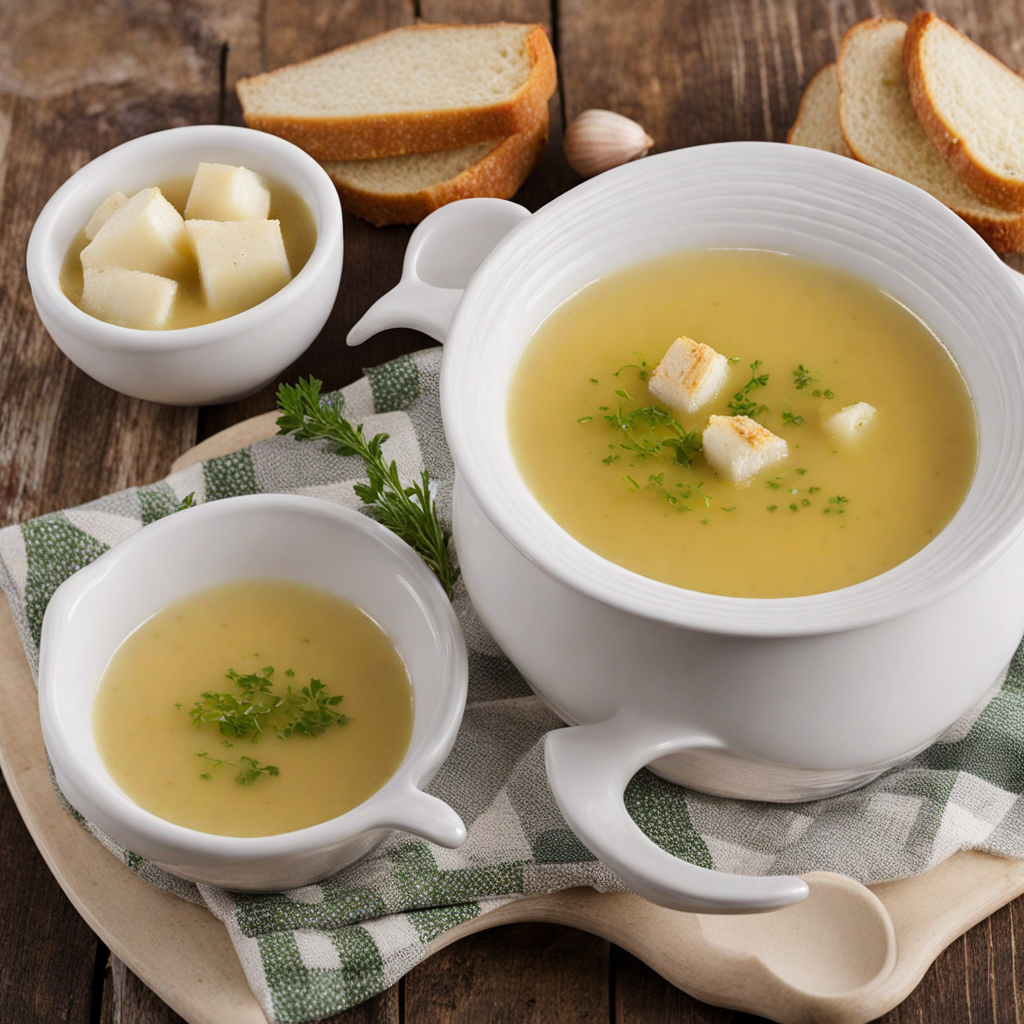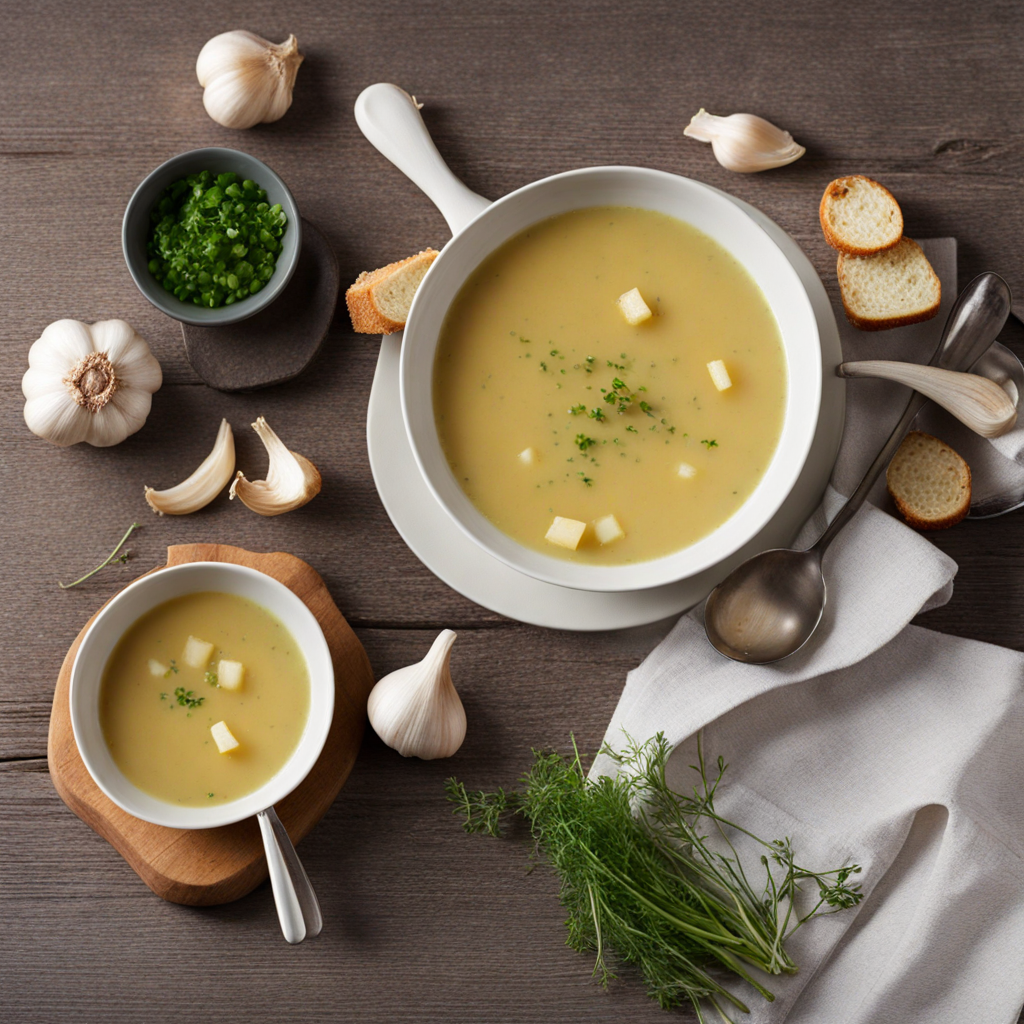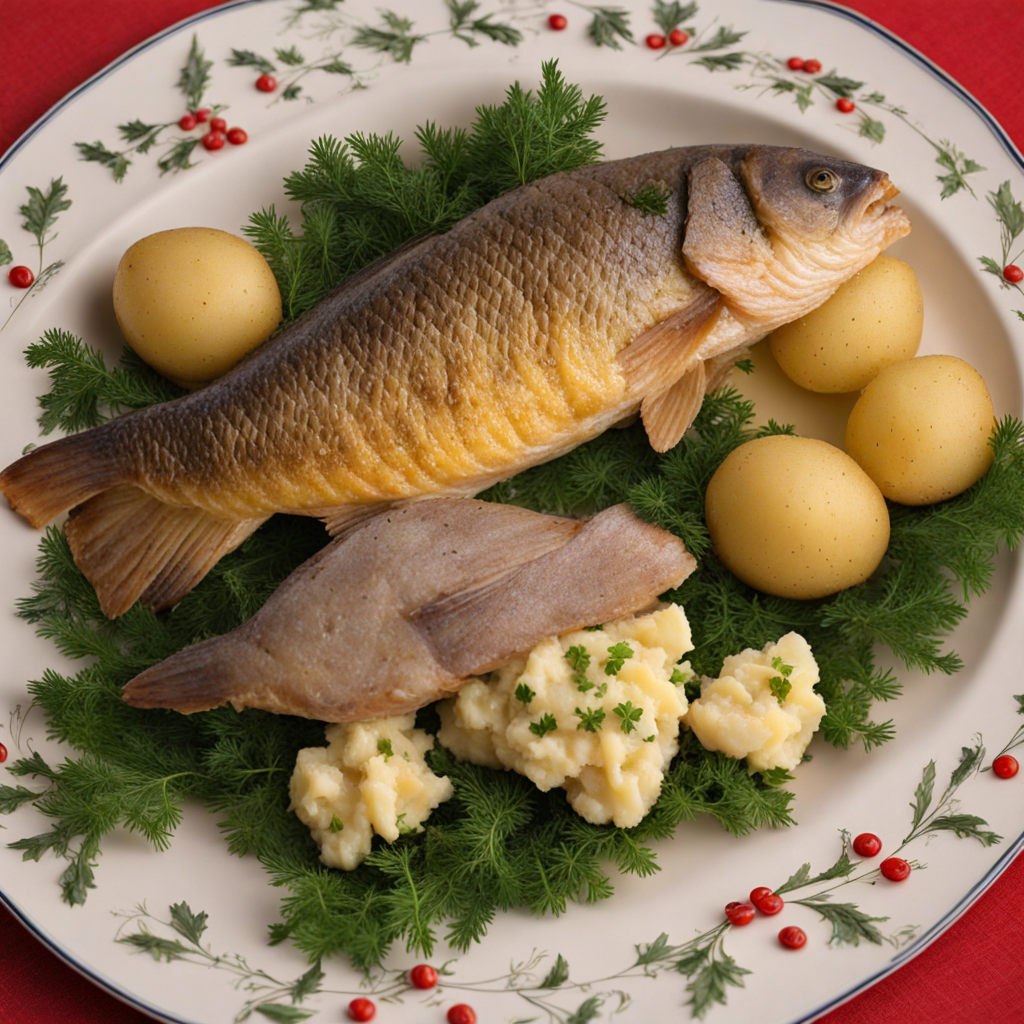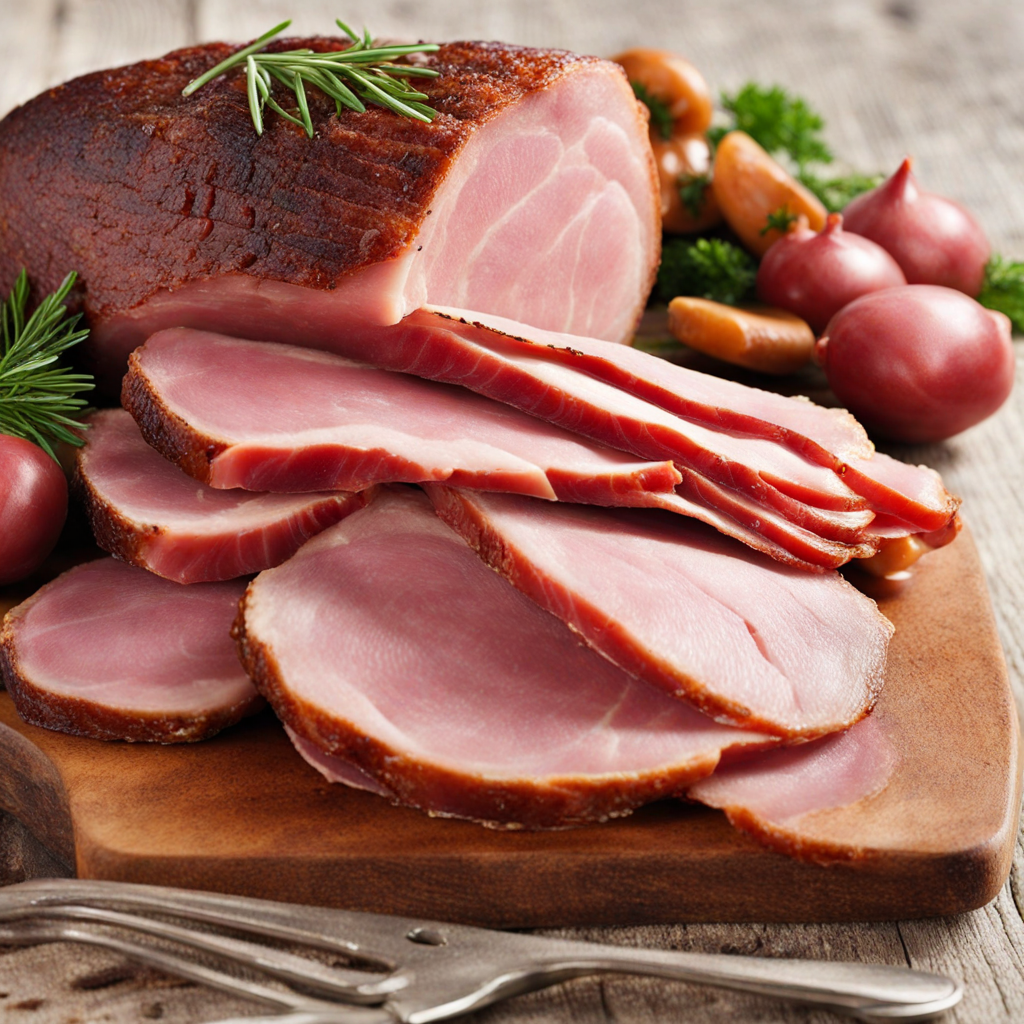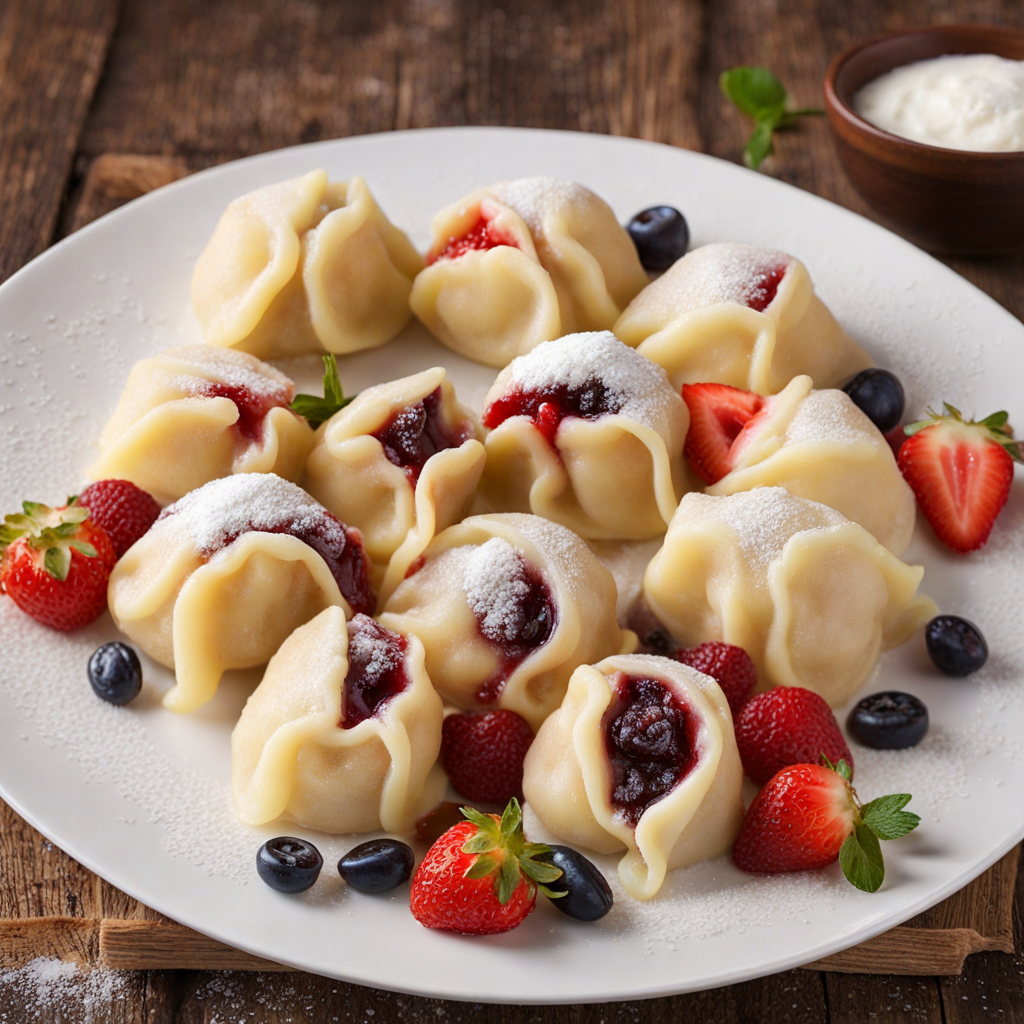Garlic Soup
Garlic Soup, or 'Česnečka' as it is known in the Czech Republic, is a comforting and flavorful dish that showcases the robust taste of garlic. This traditional soup is often made with a rich broth, typically from beef or chicken, which serves as the perfect canvas for the bold garlic flavor. The soup is commonly thickened with potatoes or bread, giving it a hearty texture that is both satisfying and nourishing. The inclusion of aromatic spices and herbs, such as thyme and marjoram, elevates the dish, while the occasional addition of smoked meats adds a delightful depth of flavor. The preparation of Garlic Soup is straightforward yet rewarding, allowing the fresh garlic to shine through in every spoonful. The garlic is usually sautéed until fragrant before being combined with the broth and other ingredients. This technique not only mellows the sharpness of the garlic but also enhances its sweetness, creating a balanced and inviting flavor profile. As the soup simmers, the garlic infuses the broth, resulting in a warm and aromatic experience that is perfect for cold days or when you’re feeling under the weather. Often garnished with croutons or a sprinkle of fresh herbs, Garlic Soup is a beloved staple in Czech cuisine, cherished for its simplicity and health benefits. It is not uncommon to find it served as a remedy for colds or fatigue, thanks to garlic's renowned medicinal properties. Whether enjoyed as a starter or a satisfying main course, Garlic Soup is sure to delight adventurous eaters looking to explore the rich culinary heritage of the Czech Republic.
How It Became This Dish
Česnečka: A Culinary Treasure of the Czech Republic Origins of Česnečka Česnečka, a fragrant garlic soup, is a beloved dish that holds a special place in the hearts and stomachs of the Czech people. Its roots can be traced back to ancient times when garlic was not only a staple ingredient but also revered for its medicinal properties. The use of garlic in cooking can be found across various cultures, but in the Czech Republic, it has evolved into a dish that is steeped in tradition and folklore. Historically, garlic (česnek in Czech) has been associated with protection against evil spirits and diseases, a belief that has permeated various cultures worldwide. In the Czech lands, garlic was considered a household remedy for ailments ranging from the common cold to digestive troubles. It is no surprise then that the simple yet flavorful Česnečka emerged as a dish that not only nourished the body but also comforted the soul. The first recorded mentions of garlic soups in Central Europe date back to the Middle Ages, when simple ingredients were transformed into hearty meals for the working class. It is believed that Česnečka, as we know it today, began to take shape in the 19th century, when it became a staple in rural households and local taverns. This period marked a shift towards emphasizing regional ingredients and traditional recipes, as people sought to create dishes that reflected their local culture and agricultural practices. Cultural Significance Česnečka is more than just a dish; it represents a connection to the land, the seasons, and the communal ways of cooking and eating. It is typically made with a base of broth—often beef or vegetable—infused with copious amounts of garlic, potatoes, and sometimes other vegetables. It is often topped with croutons or a sprinkle of fresh herbs, and in some variations, a poached egg may be added for richness. In Czech culture, food is a central element of family gatherings and celebrations. Česnečka is often served as a remedy for hangovers after festive occasions, particularly after the indulgence of beer and hearty meals common in Czech festivities. Its warming properties and invigorating garlic flavor make it a popular choice during cold winter months, evoking feelings of warmth and comfort. Moreover, the soup's simplicity and reliance on humble ingredients reflect the Czech ethos of resourcefulness. Traditionally, Česnečka was made with what was readily available, embodying the spirit of frugality characteristic of rural life. This has allowed the dish to remain accessible and adaptable, ensuring its place in modern Czech cuisine. Development Over Time As the Czech Republic underwent political and social changes throughout the 20th century, so too did its culinary landscape. The rise of communism in the post-World War II era brought about a shift in food production, distribution, and consumption, emphasizing self-sufficiency and local ingredients. During this time, Česnečka continued to thrive as a beloved comfort food, often featured in school lunches and family meals. In the late 20th century, as the Czech Republic transitioned towards a market economy, there was a newfound interest in traditional foods and regional cuisines. This period saw a revival of Česnečka, with chefs experimenting with its preparation and presentation. While the basic recipe remained intact, modern interpretations began to emerge, incorporating gourmet twists such as roasted garlic, artisan broths, and even the addition of exotic spices. As international cuisine began to influence Czech gastronomy, Česnečka found itself at the crossroads of tradition and innovation. Food festivals celebrating Czech heritage and local ingredients became increasingly popular, providing a platform for chefs and home cooks alike to showcase their interpretations of this classic soup. The rise of farm-to-table dining also reinforced the importance of fresh, locally sourced ingredients, further solidifying Česnečka's status as a symbol of Czech culinary pride. In contemporary Czech culture, Česnečka is often enjoyed in a variety of settings, from rustic taverns to upscale restaurants. It has become a quintessential part of Czech identity, representing the resilience of traditional recipes in the face of globalization and culinary fusion. Today, it is not uncommon to find Česnečka on the menus of Czech restaurants outside of the country, serving as an ambassador of Czech cuisine to the world. Conclusion Česnečka is more than just a simple garlic soup; it is a dish that encapsulates the essence of Czech culture, history, and community. Its origins in ancient folk remedies and its development through the ages reflect the adaptability and resilience of Czech culinary traditions. As the world continues to change, Česnečka remains a comforting, nourishing staple that connects generations of Czechs to their heritage. The cultural significance of Česnečka extends beyond its ingredients and preparation; it is a symbol of home, health, and heartiness. Whether enjoyed on a cold winter day or after a night of celebration, Česnečka continues to warm the souls and bellies of those who partake in its rich flavors, ensuring that this culinary treasure remains a cherished part of Czech life for years to come.
You may like
Discover local flavors from Czech Republic


